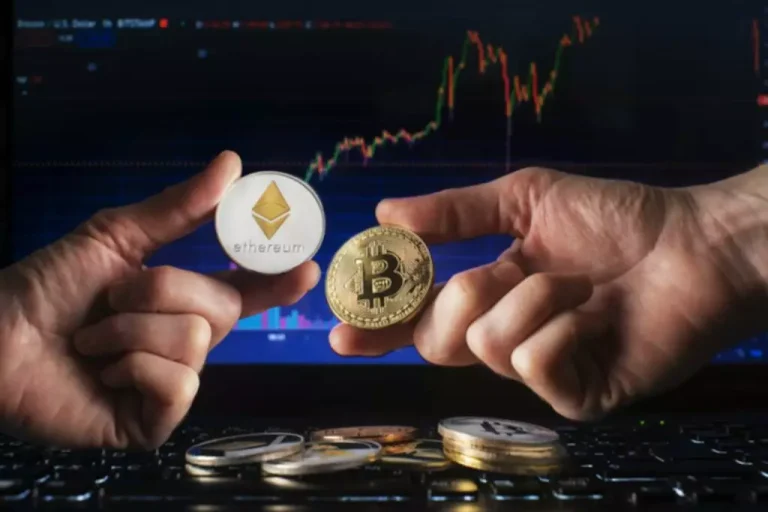Examples of agency broker dark what is a dark pool pools include Instinet, Liquidnet, and ITG Posit, while exchange-owned dark pools include those offered by BATS Trading and NYSE Euronext. Eventually, HFT became so pervasive that it grew increasingly difficult to execute large trades through a single exchange. Because large HFT orders had to be spread among multiple exchanges, it alerted trading competitors who could then get in front of the order and snatch up the inventory, driving up share prices.
What are the risks of Dark Pools?
With dark trading facilities having a more solid presence in the market Digital asset than ever, now the focus is on ensuring that liquidity is available and understandable for participants. As interior design fans know, having one big light on is not the best way to illuminate a room. Working out the right degrees of light and shade will take time – but greater optionality will create a more ambient, interesting space for everyone involved. Accessing traditional market data (stock prices) is challenging in and of itself. Stock exchanges like Nasdaq, Nyse and CBOE distribute a variety of market data feeds and it can be dificult to determine which type of data is best for you.
A Deep Dive into Public Dark Pool Trading in Australia
If the amount of trading in dark pools owned by broker-dealers and electronic market makers continues to grow, stock prices on exchanges may not reflect the actual market. For example, if a well-regarded mutual fund owns 20% of Company RST’s stock and sells it https://www.xcritical.com/ off in a dark pool, the sale of the stake may fetch the fund a good price. Unwary investors who just bought RST shares will have paid too much since the stock could collapse once the fund’s sale becomes public knowledge.

How do dark pools differ from lit pools?
Dark pools are private financial trading venues that enable participants to trade securities without revealing their identity or the size of their trades until after the transactions are executed. These platforms are designed to facilitate large trades between institutional investors while minimizing the impact of their orders on market prices. As a result, dark pools emerged as an alternative to traditional public stock exchanges, offering increased anonymity and reduced transaction costs.

- Examples of agency broker dark pools include Instinet, Liquidnet, and ITG Posit, while exchange-owned dark pools include those offered by BATS Trading and NYSE Euronext.
- By disproportionately reducing the number of uninformed trades in the lit market, high levels of dark trading could increase adverse selection risk in the lit market, leading to wider bid-ask spreads.
- Strike offers a free trial along with a subscription to help traders and investors make better decisions in the stock market.
- In New York Stock Exchange, these alternative trading systems provide off-exchange trading opportunities for investors while complying with regulatory requirements.
As they tend to have very large order sizes, institutional investors trading on the lit markets could have a market impact (move the price considerably), which is undesirable for the investor. Before executing a trade on a lit market, investors will often check to see whether there’s liquidity on dark pools, where the restricted price information allows them to execute these orders with less price impact. The EU regulatory environment has undergone significant changes with the adoption of MiFID II and MiFIR directives, driven by the challenges of the 2007–2009 financial crisis and the Flash Crash events. The main objective of these directives is to increase competition and efficiency in European financial markets.
Addressing these risks requires a more rigorous regulatory approach that goes beyond traditional solutions. Dark pools are private trading venues that offer several advantages for institutional investors, including reduced market impact, lower transaction costs, and increased anonymity. However, these benefits come with potential risks, such as reduced transparency and the potential for price manipulation. Despite these concerns, dark pools continue to play a crucial role in modern finance, providing a valuable alternative to traditional public stock exchanges.
As discussed, if a mutual fund manager, for example, wants to sell a million shares of a given stock because it’s underperforming or no longer fits their strategy, they’d need to use a floor trader to unload the position on a public exchange. Selling all those shares could impact the price they get, driving down the VWAP (volume weighted average price) of the total sale. At times, dark pool trades comprise as much as half of all trading in a single day, while at other times, they make up significantly less of U.S. equity volume. The exact reason for this is hard to pin down definitively, however my experience leads to two fairly simple explanations. Institutional broker algos and market makers tend to slice orders up fairly finely (both when resting passively and when crossing the spread), however these orders tend to be a relatively small portion of the overall dark turnover. The larger portion of dark turnover is accounted for by traders either using dedicated dark algos, sending manual submissions, or using “Dark Would” style functionality.
As prices are derived from exchanges–such as the midpoint of the National Best Bid and Offer (NBBO), there is no price discovery. According to the CFA Institute, non-exchange trading has recently become more popular in the U.S. Estimates show that it accounted for approximately 40% of all U.S. stock trades in 2017 compared with roughly 16% in 2010. The CFA also estimates that dark pools are responsible for 15% of U.S. volume as of 2014. High-frequency traders are able to take advantage of miniscule price differentials between markets which result from delays in transmission.
It can cost a lot of time, money, and effort for you or your team to set up this filtering process and maintain it over time. If you aren’t a financial market data company it can become a burdensome distraction. They use complex algorithms to match buyers and sellers and execute trades on their own accounts as well.
The primary purpose of Dark Pools is to provide liquidity while minimizing market impact. Another reason to fill large equity orders in dark pools is to obtain better pricing. 24% of GME and 15% of a certain movie theatres float is traded in Dark Pools?
The misconduct and violations described here involve European banks operating in the USA, investigated and fined by US regulatory authorities, particularly the SEC and the New York Attorney General. Overall, these issues may have arisen due to the uncontrolled growth of high-frequency trading (HFT), the unexpected consequences of opaque transactions in dark pools, and intentional misreporting to serve individual goals. These factors may have also magnified the implications of the 2007–2009 financial crisis, highlighting the need for stronger regulation.
One of the main drawbacks is that these brokers typically charge higher fees and commissions compared to other types of brokers. Agency brokers have limited proprietary products, which could limit investment options for clients. Additionally, SEC regulations generally require ATSs to be operated by FINRA member firms, subjecting them to applicable securities laws and regulations. ATSs are also subject to additional fair access requirements, and those that trade listed securities must submit disclosures regarding the nature of their trading operations via Form ATS-N. The SEC publishes those disclosures, along with a regularly updated list of ATSs, on its website. Though their name might make it sound as if these venues lack transparency or oversight, both the SEC and FINRA are actively involved in the regulation of dark pools.
Darkpool is used by institutional traders to carry out large trades anonymously, without causing market volatility. This paper examines the impact of the new regulatory packages on European equity markets by identifying areas where the legislation is effective and comparing these changes in EU legislation with US legislation on dark pools. Generally, that can be seen as a good thing for the large institutional investors that trade on behalf of their clients—those that invest in their investment funds—and potentially for market efficiency overall.

